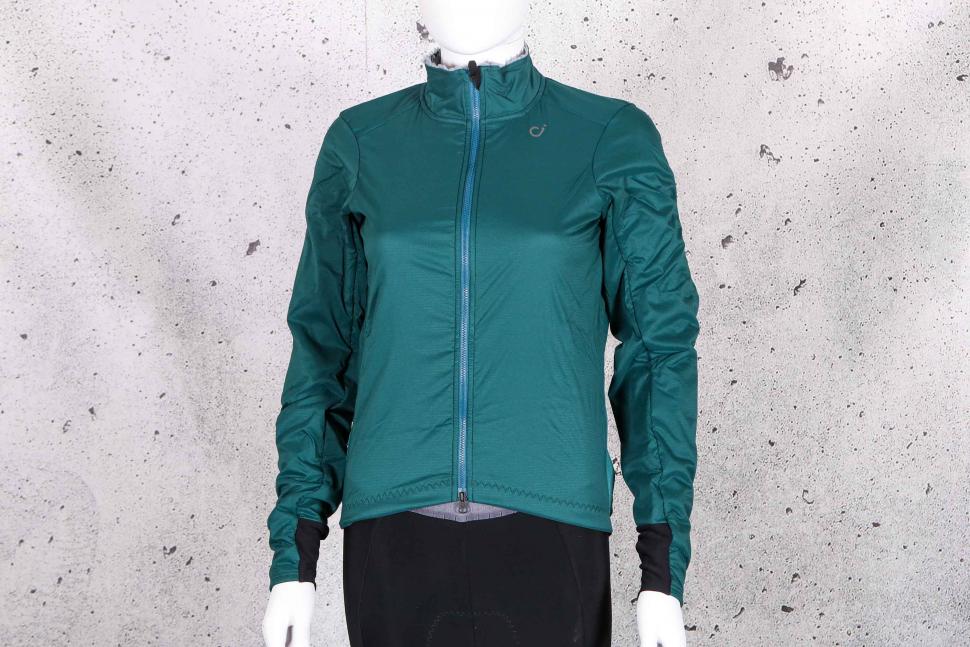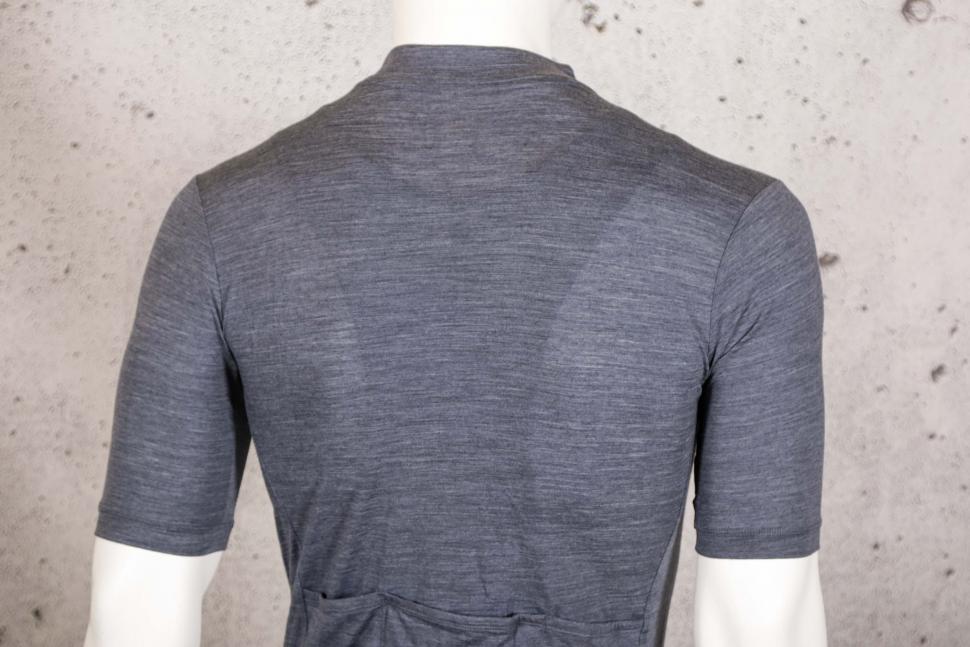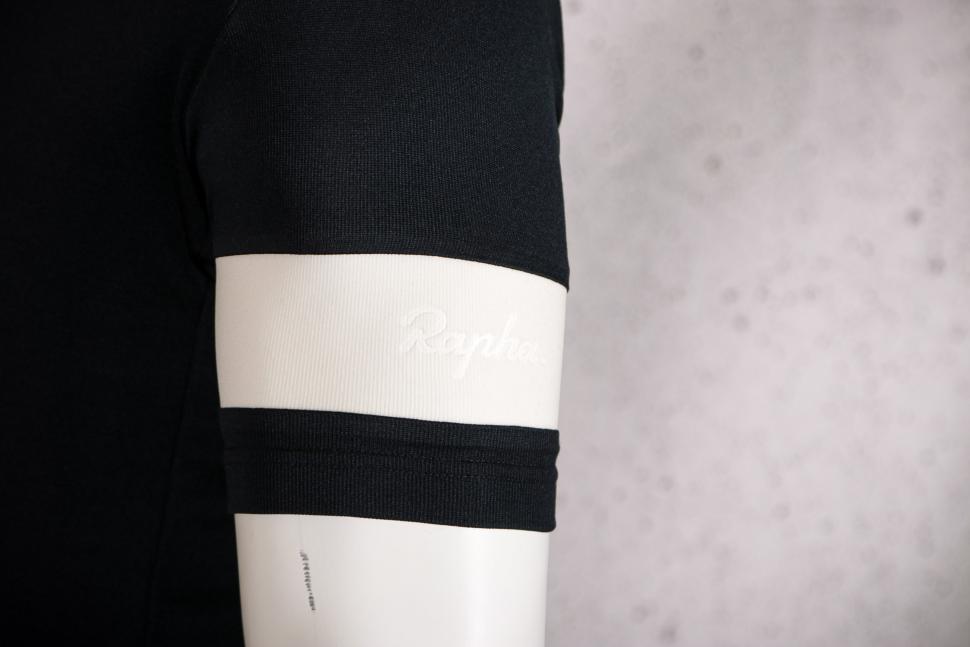- News
- Reviews
- Bikes
- Accessories
- Accessories - misc
- Computer mounts
- Bags
- Bar ends
- Bike bags & cases
- Bottle cages
- Bottles
- Cameras
- Car racks
- Child seats
- Computers
- Glasses
- GPS units
- Helmets
- Lights - front
- Lights - rear
- Lights - sets
- Locks
- Mirrors
- Mudguards
- Racks
- Pumps & CO2 inflators
- Puncture kits
- Reflectives
- Smart watches
- Stands and racks
- Trailers
- Clothing
- Components
- Bar tape & grips
- Bottom brackets
- Brake & gear cables
- Brake & STI levers
- Brake pads & spares
- Brakes
- Cassettes & freewheels
- Chains
- Chainsets & chainrings
- Derailleurs - front
- Derailleurs - rear
- Forks
- Gear levers & shifters
- Groupsets
- Handlebars & extensions
- Headsets
- Hubs
- Inner tubes
- Pedals
- Quick releases & skewers
- Saddles
- Seatposts
- Stems
- Wheels
- Tyres
- Health, fitness and nutrition
- Tools and workshop
- Miscellaneous
- Tubeless valves
- Buyers Guides
- Features
- Forum
- Recommends
- Podcast
feature
 2022 Velocio Alpha Merino Air jacket - collar inside.jpg
2022 Velocio Alpha Merino Air jacket - collar inside.jpgIs merino wool really the ultimate sustainable choice for cycling kit?
Merino wool is often marketed as the irrefutable sustainable choice fabric for cycling kit, with brands endlessly listing the natural performance benefits for outdoor exercise. Is it really as environmentally friendly as we're led to believe though?
Yes, there are an impressive amount of those natural performance benefits and it results in cycling gear you’re bound to enjoy wearing, but even merino isn't without its issues. While we'll acknowledge the wonderful qualities of this renewable resource, in this feature we'll also be looking at where merino is sourced, the ethical problems and the certifications you should be looking out for, why it’s often blended and the consequences, and how you should be looking after your merino gear to make the most of its sustainable value...
How is merino cycling kit sustainable?
In short, if a product is durable and has performance benefits, you're more likely to only buy once and use it lots. It’s important for us as consumers to put more effort into finding suitable products that we like and need, after assessing if we can use what we currently own.
Buy something that suits your needs, and do it once. It’s no good purchasing a product that is slightly better for the environment if you then fail to use it, and need to buy the more suitable item second time round.
It’s much more environmentally friendly to make a limited number of considered purchases. If it’s not a hasty purchasing decision and you’ve spent longer saving up for the premium performance item, then you’re also more likely to appreciate the garment and take good care of it.
Velocio is one cycling apparel brand that makes good use of merino in specific products, and it explains that its overarching aim is to create apparel that is both high performance and durable: “Our primary goal is to create apparel that improves experience and comfort and lasts a really long time.
“We recognise that the highest impact any apparel has is manufacturing, so these two goals mean that we can effectively reduce the impact of manufacturing by reducing the number of garments produced if we can make a product that people love to wear, and they can wear that product longer.”
There’s no doubt that merino wool garments boast a lot of performance benefits and so are likely to keep you satisfied. As detailed on Woolmark, here’s what it can offer:
Warmth: Merino wool contains crimps (natural waviness) which create pockets that trap air as you move. As that air can’t circulate it retains heat from your body to keep you warm.
This heat retention method which utilises the merino’s fine fibres provides a high warmth to weight ratio - you can stay warm with minimal bulk, and therefore it performs a useful role in a layering system for dealing with the cold or elements.
Merino wool also maintains its insulating properties when damp, meaning it has versatile use.
Soft and comfy: As merino wool fibres are fine and more flexible than standard wool fibres, they provide a gentler next-to-skin experience and, with this, can reduce itchiness issues.
Breathability: Wool is naturally highly breathable as it can absorb large quantities of moisture into its own fibres, holding it away from your skin before then moving it away to evaporate into the air.
Quick-drying: The fine fibres produce lighter fabrics that dry quicker. The fast-drying aspect is convenient for trips away and also is great for cutting down on the environmental impacts by reducing the need for high energy use for drying.
Odour resistant: Merino wool garments can be worn for longer between washing intervals because of the natural odour resistant properties of wool. This makes it a practical option for bikepacking trips as you can wear the same item of clothing without any social judging.
“It retains its benefits and often reduces other things needed on synthetics, like anti-bacterial treatments or coatings due to its natural and inherent properties,” Velocio adds.
Renewable and biodegradable
A sheep produces a new fleece each year, meaning that wool is a renewable fibre.
Merino wool is a natural fibre, and therefore 100% biodegradable. The ideal conditions are warm, damp soil combined with access to oxygen.
Researchers in New Zealand found in a study that merino fabrics lost around 36% of their mass after only two months burial in soil and up to an impressive 99% after nine months, whereas a polyester knitted fabric did not degrade at all during the course of the nine-month burial period.
Merino wool has also been found to readily biodegrade in a marine environment, whereas synthetic fibres do not.
The Woolmark Company is a not-for-profit organisation that works alongside Australia’s 60,000 woolgrowers to research, develop and certify Australian wool. It conducted a study into the biodegradability of untreated and machine washable merino wool in a marine environment compared to nylon, polyester and polypropylene.
To simulate a partial garment lifetime, all fabrics were washed repeatedly before testing. The rate of biodegradation was then compared to that of kraft paper pulp, a substance known to biodegrade readily.
Researchers found untreated wool biodegraded at 20.3% the rate of the pulp and the machine-washable wool biodegraded more than three times as quickly, at a rate of 67.3%. Nylon biodegraded at the slowest rate of just 0.8%, followed by polypropylene (1.8%) and polyester (6.3%).
Merino wool is therefore a good environmental choice during the use phase, as it won’t be polluting the ocean when being washed. Once it’s reached the end of its usable life, it can biodegrade fully when buried in soil.
Less energy intensive use phase
Two of the reasons for choosing merino wool are for its naturally odour-resistant and anti-bacterial qualities. Thanks to these qualities the social and hygienic reasons for washing frequently are significantly reduced; however, this benefit for the environment is only realised if you follow through and practice good washing and drying habits.
“Wool garments have particular attributes that favour reduced environmental impacts in the garment use phase, associated with odour resistance leading to less frequent need for washing, low washing temperature requirements and suitability for air drying practices,” it’s noted in Wiedemann, Stephen G. et al.’s study (2021).
Merino wool may have potential for a long life and low environmental impact in use, but the study concluded that there are “substantial differences between the best, current and worst case scenarios”. The use phase is well understood to be a hotspot for fossil energy demand and water consumption, but as the study acknowledges, with merino wool “opportunities exist for consumers to rapidly reduce these [environmental] impacts”.
Airing wool garments can help keep the clothing free of odours for longer, according to Laitala, K. et al.'s study (2017). By doing this you can maximise the number of times a wool garment is worn before it is washed.
As merino wool is quick-drying thanks to its fine fibres, it’s important to realise that there’s less need to attempt to quicken the drying process. Line drying or drying in an unheated room is the least energy intensive and so you should be using one of these methods where possible.
However, Laitala, K et al.'s study (2012) acknowledges that in practice it can be difficult to follow the ideal washing scenario because if you own few wool garments, it can take longer to accumulate a wool-specific laundry load, which may result in efficient washing loads.
With this in mind, Laitala, K. and Klepp, I.G.'s study (2016) recommends airing wool garments as it gives you more time to accumulate a fuller wool load. If this is not enough, making up the rest of a wool wash with garments made of other fibres is okay, as a wool wash cycle tends to be more gentle than other wash settings, and therefore won’t be detrimental to the other fibres.
Consumer washing and drying habits are a key part of making best use of the environmental benefits of merino wool, and while brands can do a lot more to instil these environmentally friendly practices by making it clearer on the product packaging, it’s down to you to wash less frequently and dry in an energy-saving way.
Can merino cycling kit be unsustainable? Mulesing, sourcing and more
Mulesing is method that's carried out to reduce the risk of losing sheep to a parasite called flystrike, but it is a painful procedure where skin is removed from around the backside of the sheep. This practice is the most important to be aware of, and to ensure you avoid if you're conscious about the welfare of the animal your garment came from.
Regular washing and shearing are much kinder methods of protecting the sheep, albeit much more expensive. Sheep that have been treated with the kinder methods produce non-mulesing merino wool.
“Where these [natural fibre] materials become problematic is more commonly associated with ethics,” Velocio acknowledges. “The treatment of these animals, how it’s processed, milled and so on.” The brand adds that down is another example of an amazing natural material in terms of performance, that has a sordid past.
“With anything - whether it’s sourcing raw materials, labour in manufacturing or end of garment life, it’s important that we consider how things are made and ensure that everyone and everything that’s involved through that process is part of that product.
“We are always working to ensure that our product meets the highest standards at every step - environmentally and ethically - and we work with all of our partners to continue to challenge this process and see where we can improve.”
Sheep mulesing has been illegal in New Zealand since 2018, but in Australia the practice is still legal.
Standards and certifications aim to address the environmental and social challenges related to wool production, and so it’s important to ensure the brands you are buying from are sourcing from certified farms and mills.
RWS stands for the Responsible Wool Standard, and alongside guaranteeing the absence of mulesing, this standard aims to ensure animal welfare through the application of Five Freedom points:
- Freedom from hunger or thirst
- Freedom from discomfort
- Freedom from pain, injury or disease
- Freedom to express normal behaviour
- Freedom from fear and distress
The Responsible Wool Standard’s social requirements are based on the principles of the International Labour Organisation’s Declaration on Fundamental Principles and Rights at Work, for guarantees that good working conditions are upheld.
Rapha, for example, has committed to only sourcing wool that is certified to the Responsible Wool Standard (RWS) by 2025. “Our commitment to using the finest, most responsibly sourced wool ensures the welfare of sheep – no mulesing – and land management practices that protect soil health, biodiversity and native species,” Rapha states on its website.
Where is merino wool sourced from?
For the cycling kit to be sustainable, 'virgin' (first time use) wool needs to be sourced from farms that are Responsible Wool Standard certified, which promote standards for animal welfare and land management. But where are these farms?
Merino wool is a natural fibre grown by merino sheep which were originally bred in Spain in the 12th century, and were later introduced to Australia in the 1700s.
“Nowadays 81% of merino wool is produced in Australia, which is the leading producer followed by New Zealand, South Africa, Uruguay, Argentina, etc,” Rapha highlights.
“There is a herd of Bowmont Merino sheep in the UK, though it tends to be relatively low volume, producing only 700kg of fibre each year - except for this kind of small scale solution, there are currently no merino wool producers in the UK or Europe.”
Rapha currently sources the majority of its wool from Australia, with a small portion from New Zealand, and does so due to its confidence in the Australian Wool Strategy 2030.
“Through technological innovation, environmental stewardship and building a young and prosperous community of farmers, the strategy is transforming Australian farming,” Rapha highlights.
“Progressive agritechnologies including virtual fencing and remote sensing are employed to help the young, skilled workforce, and farmers are also equipped with the apparatus needed to detect health issues like flystrike early on, so that sheep can be separated and treated without the need for mulesing.”
Relationships form part of Rapha’s sourcing practice. “Since the inception of our sportwool jerseys, which make up the majority of our merino supply chain, we have worked with the same mill who sources from Australia and New Zealand,” Rapha says.
“Wherever possible, we look to build upon our existing relationships with our long-standing partners, who are experts in their field.”
Although wool is environmentally friendly as a natural, renewable and biodegradable resource, it is sourced from far, far away from UK consumers, which does result in some unwanted environmental impacts. How it’s transported over can make quite a considerable difference in how much damage is cause, though.
Blending for increased durability and lengthened use phase
Merino wool is often blended with other fibres to increase the durability and elasticity of the clothing for improved comfort, fit and lifespan. In these cases, the performance benefits and increased use period are chosen over biodegradability and recyclability.
Alpkit uses the ‘corespun’ manufacturing method for its merino wool clothing to improve the durability and elasticity without losing any of the benefits.
“It's made by wrapping a central thread of nylon and elastane with Merino wool fibres to create a single yarn,” Alpkit explains. “Clothing made with corespun Merino lasts longer, stretches more and recovers its shape better.”
Velocio, for another example, has blended merino wool with nylon and elastane in its Concept Merino jersey.
It’s also the same case for Rapha’s Classic Jersey II. “For performance, our RPM fabric is 64% recycled polyester, 36% merino wool,” says Rapha.
But… “unfortunately, once you blend a natural fibre with a synthetic fibre it limits both biodegradability and recyclability,” Rapha continues.
“It’s one of the biggest challenges for the apparel industry, as so many fabrics are blends.
“For the cycling industry especially, we’re all going to struggle with recycling clothing with high amounts of elastane, such as bibshorts.
“This is something we’re exploring and looking to overcome, with our target of 50% of production volume being recyclable or compostable by 2027.”
Velocio explains its approach: “We look to how we can reduce the use of “new” materials wherever possible.
“That’s why we look to recycled polyester and nylon, bio-based synthetics and natural fibers, such as non-mulesing merino wool.
“It’s important to consider here the first point about performance, comfort and durability.
“The fact is, merino is superior for certain applications over synthetics, while in other situations, synthetics prevail.
“This goes for durability as well. So when we select a non-mulesing merino, we’re doing so because it performs exceptionally and for its sustainable qualities.”
There are certainly many considerations that need to be balanced. A lot of cycling brands utilise merino for its natural performance benefits, and accept that increasing the durability is a necessary step for reducing the environmental impact in one way by lengthening the use phase.
The journey of the merino product
So, we’ve gathered that merino is often blended to bolster its performance benefits, and we’ve also established that merino wool is often distantly sourced in Australia. This is because there simply aren’t closer options for cutting shipping emissions, which would of course be preferable for a reduced environmental impact.
With the added blending process, the distant farm from which the merino wool is sourced is only one step in its journey to the final product
We were very impressed by the comfort and breathability of Rapha’s Classic Jersey II, in both the men’s and women’s cuts, and so it certainly ticks the boxes of being a high quality product that’ll cover your needs. With this in mind, here are the steps taken from the raw material to final product, to understand how environmentally friendly the whole process is…
> You can read the full review of the men’s version here and the women’s fit here.
Rapha made the jersey with its Rapha Performance Merino 150 fabric (RPM150) which consists of 36% merino wool mixed with 64% recycled polyester. The polyester is often added to merino to help with stretch and strength of the fabric.
”The raw wool is sourced from an Australian farm, then sent to Italy to be spun into yarn, where it leaves with Responsible Wool Standard certification,” Rapha says.
“Meanwhile, the mechanically recycled polyester is sourced from post-consumer waste in Asia.
“The two come together in Poland, before being sent back to China where it’s cut and sewn into a finished jersey.”
Rapha clarifies that the RWS certification is up to fabric level, not just yarn, so it leaves the Poland mill with the certification.
“We’ve put in the work to trace each fibre back to the source, but it’s clear to see that the supply chain for materials is complex,” Rapha notes.
“Having this information to hand is the first step to making adjustments that will make things more efficient and ultimately minimise emissions.”
So, is merino cycling kit really sustainable?
It’s a complicated process to produce a top-performing merino product - so there’s certainly a lot more to consider when using merino wool than just its natural performance benefits.
While merino does boast a lot of amazing natural performance benefits - it’s warm, comfy, breathable, quick-drying and odour resistant - it could also do with a little bit of extra stretch and strength, particularly to meet the demands of cycling.
Brands often blend merino with other fibres such as nylon and elastane to increase the durability and elasticity of the clothing for improved comfort, fit and lifespan which will help lengthen the use phase, but this does limit biodegradability and recyclability, as well as increasing the steps in its journey across the world, from raw materials to the final product.
Cycling kit that is ethically produced - made from non-mulesing merino wool and meeting certifications such as RSW - begins its journey as far away as Australia or New Zealand.
But merino wool is a good environmental choice during the use and end-of-life phase. Thanks to its naturally odour-resistant and anti-bacterial qualities the social and hygienic reasons for washing frequently are significantly reduced, and it’s quick-drying too so it’s possible to dry in an energy-saving way. That said, it’s down to you to follow through with these good practices.
Merino wool also won’t be polluting the ocean when being washed and once you’ve finished using it, it can biodegrade fully when buried in soil.
Knowing what you know now about merino manufacturing, will you be buying merino cycling kit in future?
Anna has been hooked on bikes ever since her youthful beginnings at Hillingdon Cycle Circuit. As an avid road and track racer, she reached the heady heights of a ProCyclingStats profile before leaving for university. Having now completed an MA in Multimedia Journalism, she’s hoping to add some (more successful) results. Although her greatest wish is for the broader acceptance of wearing funky cycling socks over the top of leg warmers.
Latest Comments
- David9694 26 min 16 sec ago
Whitley Bay pub suffers bad start to 2025 after car crashes into it on New Year's Day...
- Rendel Harris 41 min 14 sec ago
You don't understand, they are Public Space Protection Orders, obviously they can't be applied to the roads which are a private space belonging...
- Rendel Harris 2 hours 17 min ago
I agree, a 44x10 will get you 56km/h at 100 rpm (assuming 700c wheels with 28mm tyres) on the flat, realistically most of us aren't going to be...
- ktache 10 hours 36 min ago
Very pleasingly warm for its weight.
- Velophaart_95 11 hours 51 min ago
What is 'an average cyclist'? The woman next door shopping on her bike is as much as a cyclist as the local wannabe pros in lycra.
- wtjs 14 hours 17 min ago
In the vast majority of these bike cam skirmishes (and in a similar % of car dashcam videos), the outcome is blatant from early on......
- wtjs 15 hours 11 min ago
district judge Andrew Sweet banned the rapper, who was not present in court, from driving for nine months and fined him £2,010...
- Smoggysteve 17 hours 3 min ago
There have been a few like this. I saw a very genuine looking one selling Castelli and Rapha around June time. I very nearly bought something but...










Add new comment
114 comments
But that makes the assumption that you instantaneously heat up to the maximum temperature - you don't. We're still in the process of heating up to X.
Think of it another way:
Clearly that's not going to work - you need to turn it down at least below 22C before the house will start cooling down at all.
My original post made it quite explicitly clear that it was about a fixed point.
Not a point in transition.
This is why your original objection made no sense.
Your blanket analogy also doesn't make sense in that regard.
And finally the transition argument is irrelevant to the case of animal herds that have been at the same size for a long fixed period.
Any warming period is over.
The temperature is now constant.
A decrease in size produces cooling.
If we fixed every single variable on the planet at the exact level they were at today how long will the planet keep warming for?
But that's not where we're at - we are in a transition, so it makes no sense to argue as if we were at a fixed point. Even if we accepted your argument that what's in the atmosphere that can be attributed to sheep farming has been stable for a long period, it makes no sense to consider it in isolation. It's effect combines with emissions from all other sources, and even if you reduce that from sheep farming a little, the net effect is still going to be warning.
That's just simply untrue. Things are still getting warmer, and will continue to for some time to come. The actions we take now are about limiting how big that temperature increase will be.
Quite a while yet.
If we're discussing the effects of one specific variable it makes perfect sense to discuss that variable in isolation.
That's what I'm doing. I'm discussing the effect of methane from sheep farming. I'm not denying that the planet as a whole is warming just that the contribution to warming made by a herd/flock of fixed size is limited by the short life of methane.
If we want to know whether we should reduce sheep farming for example we need to know what contribution sheep farming has made to warming and what effect on our current temperature continuing at the current level will have.
Ok.
If you double the amount of methane in the atmosphere, then maintain it at that exact same level while everything else remains exactly constant how long does the planet continue to warm for?
Let's define that and then we can discuss the effect of changes in herd size etc.
Until we define the period of time to equilibrium the discussion can go nowhere.
Oh dear. Right, very briefly, the biogenic carbon cycle works by plants absorbing carbon from many sources, some of which is released back into the atmosphere by animal consumption, which is then reabsorbed by plants. Right? However, if you vastly disrupt both phases of that cycle by, firstly, massively reducing the number of available carbon-absorbing plants through the deforestation required for current human levels of animal husbandry and, at the same time, massively increasing the number of animals producing methane/CO2, the entire cycle ceases to balance, there is simply too much CO2 being produced and it remains in the atmosphere, you're trying to fit the proverbial quart into a pint pot.
This is the reason for the excess levels of CO2 in the earth's atmosphere at present, because human activity has overdriven the planet's capacity to absorb carbon whilst at the same time diminishing that capacity. Part of that overload (10-15% of emissions) comes from industrial animal husbandry, which at the same time has played a very major part in diminishing said capacity.
If you want to go on deluding yourself that meat, dairy and wool production is carbon neutral and that every single molecule of CO2 produced by livestock is reabsorbed by plants, be my guest. I'm done.
Levels of methane in the Earth's atmosphere over time. Same source also states that: "The concentration of methane in the atmosphere has more than doubled since preindustrial times, reaching over 1,800 ppb in recent years (see the range of measurements for 2019 in Figure 2). This increase is predominantly due to agriculture and fossil fuel use."
Source is the US Environmental Protection Agency
https://www.epa.gov/climate-indicators/climate-change-indicators-atmosph...).&text=Levels%20have%20risen%20since%20the,three%20sites%20in%20Figure%203).
You're really struggling with this aren't you Rendel!
Every molecule of CO2/CH4 excreted by livestock is derived from atmospheric CO2 (via plant photosynthesis).
It is mathematically impossible for this process to lead to an increase in the concentration of CO2 in the atmosphere.
1 molecule of CO2 in, 1 molecule of CO2 out.
Deforestation can lead to an increase in CO2, I will give you that but deforestation is caused by farming of all varieties amongst other things so is a bit of a red herring in this discussion.
Livestock can increase the proportion of methane in the atmosphere and this increase does lead to warming but only for 12 years. After that time there is no further increase in the methane concentration and therefore no ongoing warming.
All fossil fuel use by comparison will increase the level of atmospheric CO2 and ongoing fossil fuel use will lead to ongoing warming.
Ongoing livestock farming (at a constant level) will not.
You are giving me a good chuckle this afternoon, I confess. Come on, you're a cussed sort who will never admit he's wrong but you're not stupid. In a perfectly balanced ecosystem, one in, one out would work. When you massively increase output of CO2 by increasing livestock numbers and at the same time massively decrease the capacity for CO2 absorption through the processes required to increase livestock numbers, you have more CO2 than the cycle can absorb. Where do you think that excess goes? I know you'll just keep repeating "one in one out" but it won't make it any less foolish.
Think about this: every molecule of CO2 created by burning fossil fuels was originally derived from atmospheric CO2 before it was absorbed by plants which then turned into said fuel. Does that mean that it's mathematically impossible for levels of atmospheric CO2 to be increased by burning fossil fuels? By your logic, the answer should be yes.
You've accepted that all livestock produced CO2 and CH4 originally derives from atmospheric CO2.
That's basic biology.
What you're arguing is that not all of that CO2 is resorbed into plants.
Assuming that each animal requires a constant amount of plant based food to survive can you explain where that plant based food comes from?
If you burn the fossil fuels and release the carbon you will return to CO2 to the levels seen when that Carbon was sequestered.
LInen production uses a lot less water than cotton and, reading around a few sites that concern themselves with these issues, seems to be considered friendlier to the environment, not least because the flax plant has lots of other uses like making flaxseed oil. However, it ends up expensive because its harvested by hand in order to get the longest-possible fibres.
The fabric marketed as bamboo, on the other hand, is environmentally dreadful as the bamboo fibres are just a feedstock for the viscose rayon process which releases into the environment carbon disulphide, a neurotoxin, which, according to wikipedia, produces this lovely set of symptoms:
I think it uses less water and pesticide than cotton and fewer chemicals than bamboo so overall pretty good.
Hemp is also meant to be a very sustainable choice for normal clothing, not sure it'd be much use for cycling mind!
"Land management (though much lower than some other livestock types) such as nitrates, manure and other products applied to the land, ploughing or cultivating, reseeding, fencing, draining, dealing with invasive species like gorse or bracken. Straw from arable crops, winter feed, feed supplements and supplies from energy-intensive sources using national or regional agribusinesses chain which itself has significant infrastructure and logistical overheads."
But that's problems of all intensive, industrial farming (which we have to and could do something about), nothing to do with the particular point in question.
It was a response to Rich_cb's assertion that "A sheep can live on marginal terrain that's unsuitable for growing crops and produce a useful product for no net increase in CO2."
That's simply not true.
There are environmental costs to everything and it is rarely a simple choice. For many people natural fibres are generally preferable to synthetics for a number of reasons. Although I have concerns about the sheep monoculture in much of the UK upland areas (and the huge subsidies dished out to make it viable but at the moment I think this is a 'less bad' thing than drilling for oil in the sea, the Arctic or anywhere else.
Sorry I'm a bit late back to this, but I'm going to disagree. Yes, net zero claims no net increase in CO2. But that's not going to help. A tree takes 100 years to grow, sequestering CO2 along the way, but if you cut it down and burn it for fuel, the CO2 goes straight back into the atmosphere. No surprise. But that tree has still been carbon neutral over its lifetime. This is what makes biomass such a problem as a fuel and what drove my savings analogy - spending all my savings is cash-neutral but still a bad idea. We have been releasing CO2 absorbed over many millions of years in the last 150, spending the savings.
Yes, sheep can graze on marginal agricultural land. But such land can also sustain non-commercial plant growth and forestry, which can obviously act as a CO2 sink. Just because land is neither built nor farmed on dies not make it useless.
I'll admit I'm a merino and bamboo fan for performance and the feeling that these are natural materials. I've been somewhat schooled on here (ashamed to say I can't recall by whom) about the actual impacts and have looked a little deeper. I still don't have an answer about the least damaging material for each type of cycling clothing, apart from these principles:
1. The greenest option is to get more miles out of what you already own, or buy used.
2. Try to find a short supply chain because more transport is usually going to be worse.
I would like to know rather more about this, and would value road.cc doing more on it.
It's not 'flatulence', it's the burps that contain methane.
Very interesting article.
Part of the reason I became 'vegan' is the environmental aspect, however being a 'proper' vegan means no use of animal products in clothing, as well as food. With regard to cycling kit, this pretty much restricts one to synthetic garments only (given cotton isn't really an option). Having read this, it seems the actual 'green' thing would be to use merino that is ethically produced.
(Vegan) food for thought indeed.
Another vegan here (that's two of us, Hurrah!).
What this article doesn't touch upon are two crucial points which the industry doesn't want addressing. Fwiw, this industry is out to make a profit, plain and simple. Animal welfare is not a consideration.
1) When sheep are done being used for whatever monetary benefits they bring, they are a commodity after all, not a sentient being, they are sent to have their throats slit and eaten just like any other animal that is killed unnecessarily.
2 The land and crops required for animals to serve us is massive. This is incredibly bad for the environment, and it's also senseless feeding animals crops that humans could be eating. This is not to mention the deforestation caused by the relentless pursuit of soy with which to feed these animals (something like 75-80% off all soy production is used for animal agriculture).
Is that necessarily true for sheep being farmed for wool? I have no idea if their wool production becomes less useful if they age, but if not, then why not just keep them around until they die naturally or start suffering from a fatal disease? It would seem that they're more valuable producing fleece than being sold as mutton.
Edit: from a bit of duckduckgo-ing, it looks like wool production does decline after a few years, so it's likely that older sheep become unprofitable (and thus killed and sold as food).
Same with dairy cows - once they reach their shelf life, and they can no longer be milked for a profit, they're killed. The whole thing is a shit show but we've been doing it for so many years now that we think is all totally normal. Tragic.
Every merino sheep sheared for its wool ends up being killed?? If that is true it's not good to hear. Guess theres exploitation in every type of manufacturing, to humans and animals alike. Look at the stories about how Apple have stood by while Chinese workers are treated terribly to give us our Macs, iphones etc. Feels like sometimes, the only way we can live exploitation-free lives without coming across as hypocrites is to go live in the rainforest or something.
What industry doesn't?
Even CICs and charities want to make a profit, though some charities are charlatans in disguise. I won't support the big celebrity-driven TV types. Keep it small, keep it personal, like road.cc regular Rendel Harris's efforts for toilet twinning (forum thread).
Buying synthetic products directly supports the oil industry (recycled ones far less so) and as Rich_cb as said, disposal is always going to be a problem. And no-one seems to mention the byproducts of synthetic fabric manufacture. But choosing between these and livestock farming byproducts (i.e. wool) is not a simple A or B exercise.
One way to genuinely reduce the impact of your clothing is to wash it less and wash it cool. This prolongs its life and uses less energy, detergent (you're using Bio-D, SESI, Ecover or equivalent, right?) and water. Tumble dryers are bad news for your clothes and energy consumption.
True. If you drink soya milk then European soya used by Alpro/Provamel and others is not implicated. The overall footprint of plant milks is roughly a quarter of that of dairy, which also has serious consequences far beyond the exploitation of animals.
Pasture-fed livestock and dairy is a growing niche but it's not a solution; from what I can see only the feed and some husbandry practices that are changed so it's far from perfect. But locally sourced PF meat and milk/cheese is probably where diehard meat-eaters and should be looking. Organic cow's milk and cheeses can be inexpensive (on-farm vending machines are on the increase) while the environmental, welfare and other benefits of choosing organic are not insignificant.
There are large areas of UK land that cannot grow many crops and there is an case for selective low-impact grazing, notably beef cattle. But we should be restoring peatland where possible and growing lots more trees and far fewer sheep on UK uplands. Natural regeneration in some places, managed woodland for timber etc in others.
Ecover delicate is good for all of your cycle clothing needs, not just wool, apart from goretex, want a more pure soap for that. Cold washes too.
Needed to source some raw milk for work, found a vending machine thing at a farm near Farnham. Jersey cows. One of the greatest miklky experiences of my life. Like milk was truly meant to be. Occasional TB problems mind...
Pages